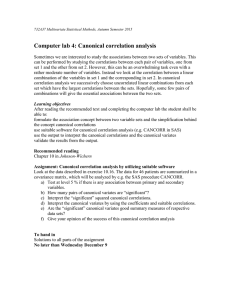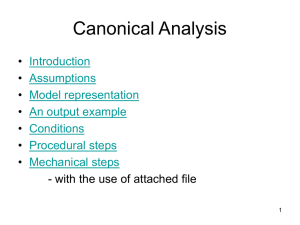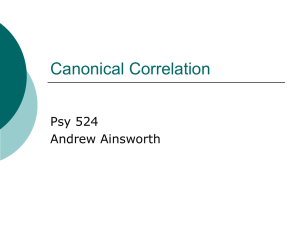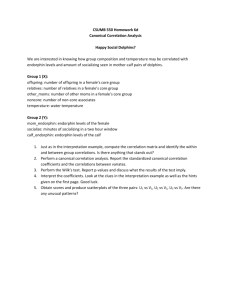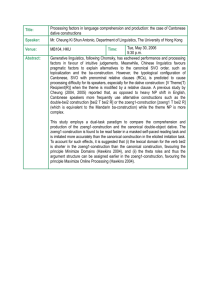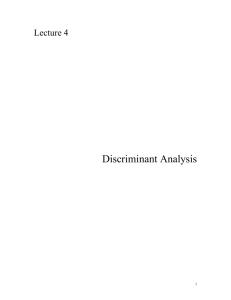emotion depression
advertisement
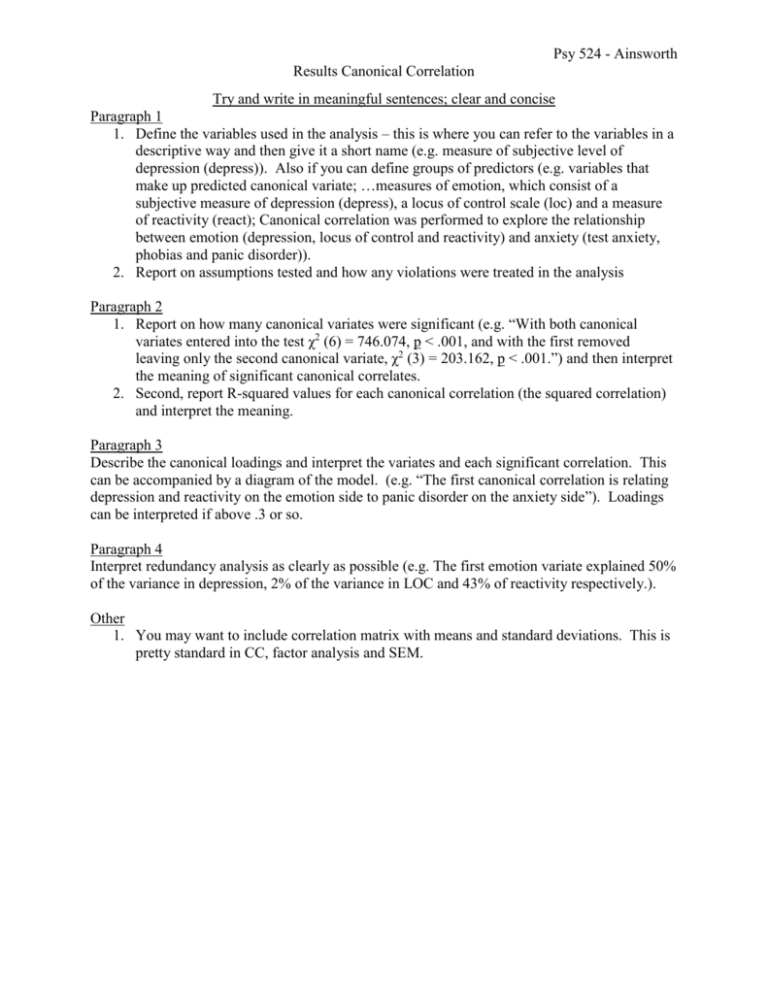
Psy 524 - Ainsworth Results Canonical Correlation Try and write in meaningful sentences; clear and concise Paragraph 1 1. Define the variables used in the analysis – this is where you can refer to the variables in a descriptive way and then give it a short name (e.g. measure of subjective level of depression (depress)). Also if you can define groups of predictors (e.g. variables that make up predicted canonical variate; …measures of emotion, which consist of a subjective measure of depression (depress), a locus of control scale (loc) and a measure of reactivity (react); Canonical correlation was performed to explore the relationship between emotion (depression, locus of control and reactivity) and anxiety (test anxiety, phobias and panic disorder)). 2. Report on assumptions tested and how any violations were treated in the analysis Paragraph 2 1. Report on how many canonical variates were significant (e.g. “With both canonical variates entered into the test χ2 (6) = 746.074, p < .001, and with the first removed leaving only the second canonical variate, χ2 (3) = 203.162, p < .001.”) and then interpret the meaning of significant canonical correlates. 2. Second, report R-squared values for each canonical correlation (the squared correlation) and interpret the meaning. Paragraph 3 Describe the canonical loadings and interpret the variates and each significant correlation. This can be accompanied by a diagram of the model. (e.g. “The first canonical correlation is relating depression and reactivity on the emotion side to panic disorder on the anxiety side”). Loadings can be interpreted if above .3 or so. Paragraph 4 Interpret redundancy analysis as clearly as possible (e.g. The first emotion variate explained 50% of the variance in depression, 2% of the variance in LOC and 43% of reactivity respectively.). Other 1. You may want to include correlation matrix with means and standard deviations. This is pretty standard in CC, factor analysis and SEM.

